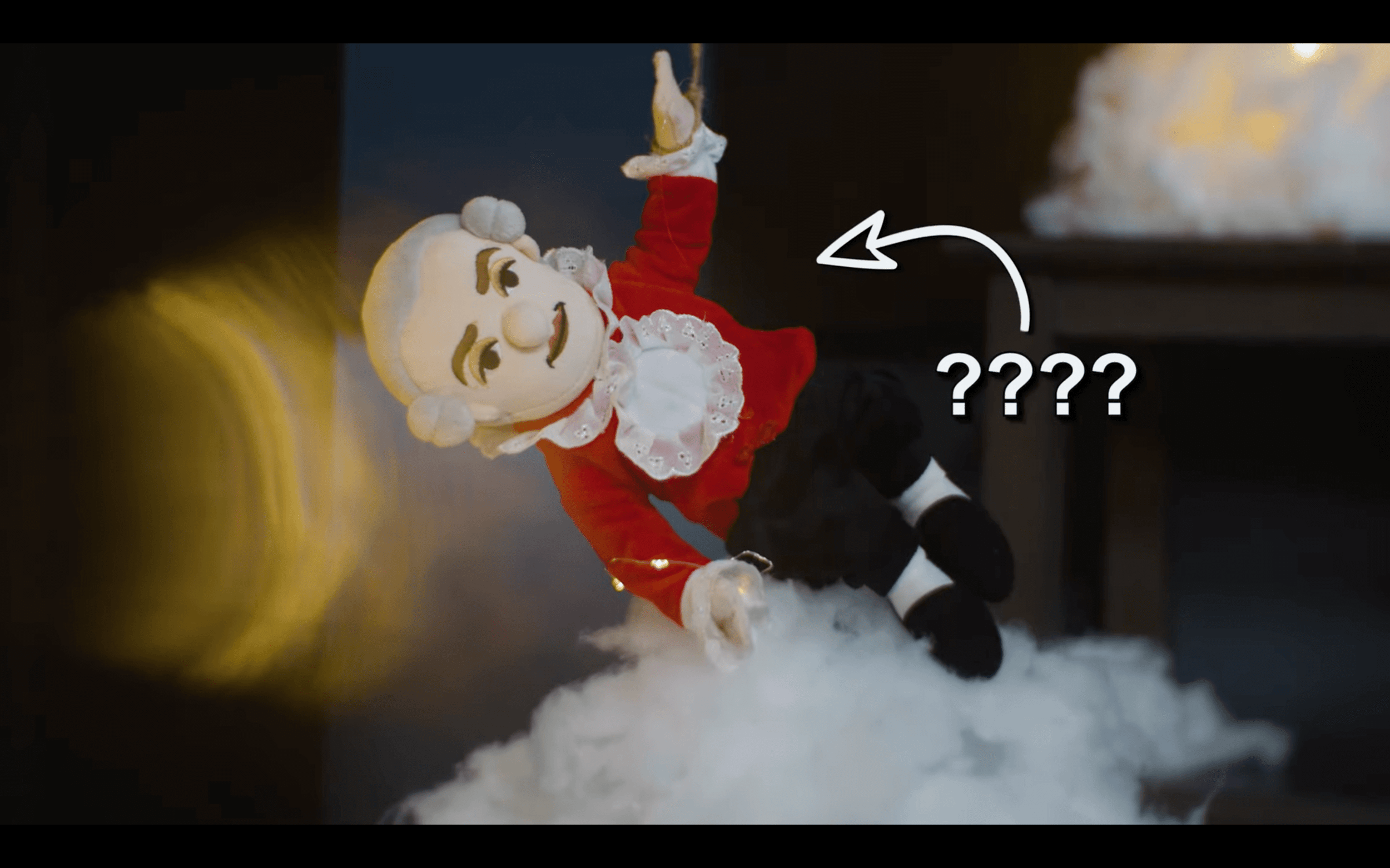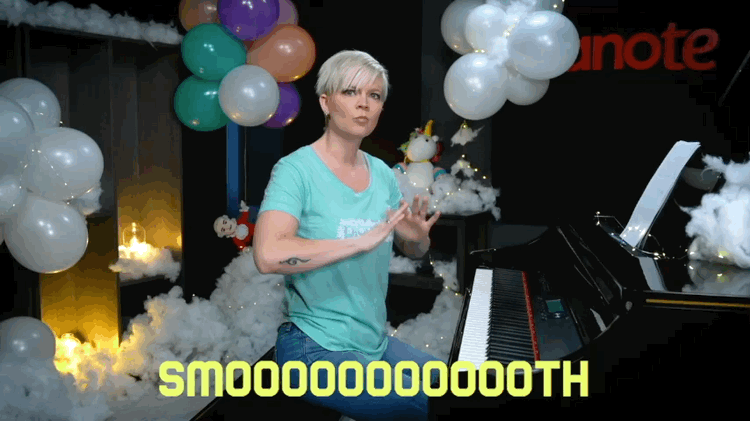Want to learn how to play piano FAST? Here are three speed exercises to take your playing to the next level. One works for your fingers, another works your brain, and the third even incorporates chord progressions!
But before we start…BONUS ASSIGNMENT. Can you guess who this composer is? Comment your guess on our YouTube video!

<<Download the lesson materials here>>
When you learn piano, two of the first things you’ll learn are the tuck-under and fly-over motions used to play scales.
These can trip up beginners and slow them down.
So for our first exercise, we’ll focus on playing a descending C major scale over two octaves. This will really make you focus on getting those finger movements smoooooth!
🎚️ TIP #1: Use a metronome! Find a tempo you can play consistently in. Don’t be afraid to start at a slower tempo. When you’re first practicing, the key is consistency, not necessarily breakneck speeds!
RIGHT HAND
👋 TIP #2: When you’re comfortable with your right hand, don’t forget your left. (It often needs more love, but a left hand that needs more practice is very normal.)
LEFT HAND
Once you have your scale locked down, try adding a leap.
Practice leaping between the lowest C of the two-octave scale and the highest one. Then, play descending scales with a leap in between.
If you make mistakes at first, don’t worry! This is supposed to be challenging 🙂 Leaping two octaves between Cs will really challenge your focus and accuracy.
Playing piano is super physical…but it’s also a mind game.
This exercise will train not just your fingers, but the brain that controls those fingers 🙂 Instead of a descending scale, we’ll play a pattern that’s less predictable. Which will make your brain WORK.
RIGHT HAND
Get the notes down first. THEN grab your metronome and slowly ramp up your speed.
Remember to exercise both right and left hands! You may notice that your weakest point is between your fourth and fifth fingers. This is normal — it just means you might have to slow down and target those fingers.
LEFT HAND
💭 TIP #3: Play with intention! Focus is key to good technique. It’s often when we lose focus that our fingers get sloppy.
The cool thing about this exercise (and all three of these exercises) is you can start on any note and transpose them to any key.
If you need a refresher on how keys work, check out our free lesson on the Circle of Fifths. All you have to do, basically, is figure out how many flats or sharps are in the key you want to play your exercise in.
For our last exercise, we’re going to move between a C major root position chord, an inverted F major chord, and an inverted G7 chord.
(If you don’t know inversions yet, don’t worry! I’ll show you exactly how these chords are played. But you can learn more about inversions here.)

If this progression sounds familiar, you’re on to something! These chords are the building blocks to many popular songs.
👉 TIP #4: Keep notes consistent! Prioritize playing steady, consistent, and even notes.
The reason why we use inversions in this exercise is because they let us move from chord to chord without having to leap across the keyboard. Having notes close together makes for an easier speed exercise!
Still, that doesn’t mean these exercises aren’t challenging…
RIGHT HAND
🐢🐇 TIP #5: Stay on tempo! Be patient. Gradually work your way up from a slower tempo and only increase speed when you can play consistently at that tempo.
Aaaaand don’t forget to practice your left hand too!
LEFT HAND
Before we let you go and practice, remember one thing…
It only counts if you stay on tempo!
The truth is, to play piano fast, you have to start slooooow. It may feel like a grind at first, but everyone starts somewhere.
And as long as you practice consistently — focusing on your technique — you’ll be flying smooooth in no time!

Lisa Witt has been teaching piano for more than 20 years and in that time has helped hundreds of students learn to play the songs they love. Lisa received classical piano training through the Royal Conservatory of Music, but she has since embraced popular music and playing by ear in order to accompany herself and others. Learn more about Lisa.
/marketing/pianote/lead-gen/digital-chords-and-scales/master-every-chord-bg.png)
/marketing/pianote/lead-gen/digital-chords-and-scales/Chords-scales-digital-logo.png)
Enter your email address to get your FREE E-Book instantly.
By signing up you'll also receive our ongoing free lessons and special offers. Don't worry, we value your privacy and you can unsubscribe at any time.
We use cookies for traffic data and advertising. Cookie Policy »